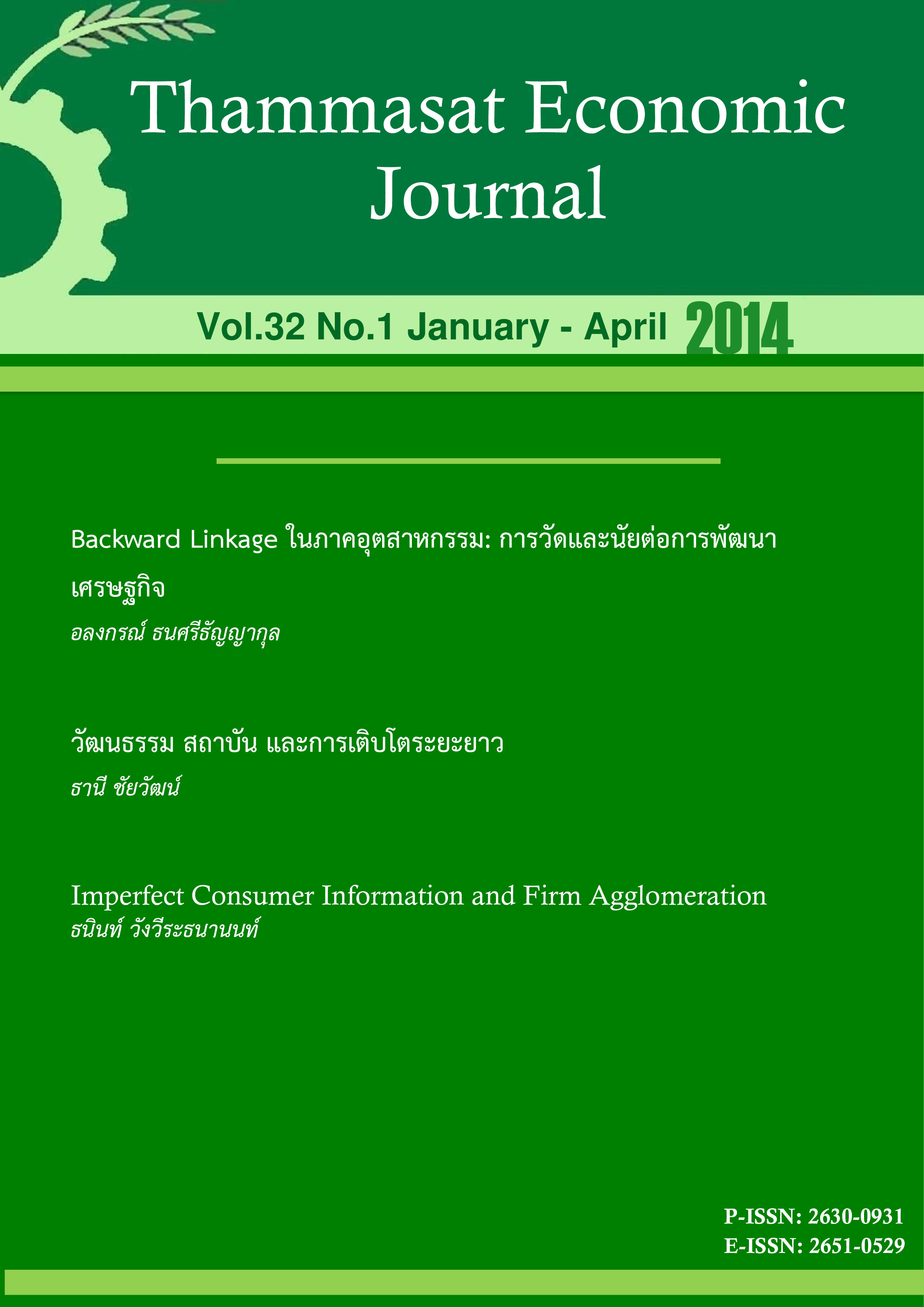Backward Linkages in Thailand’s Industrial Sector: Measurement and Implication for Economics Development
Abstract
This paper investigates the relationship among backward linkages, export income and labor creation in Thailand’s industrial sector during the years 1985-2005. It found that export-led growth policy led to a steady decrease in backward linkages, except only 1997. However Thailand’s export income and labor creation had been increasing in this period. This showed that backward linkages are perhaps not significantly important factors for encouraging export income and labor creation. Moreover, a downward trend in Thailand’s backward linkages was caused by a structural change in Thai industrial sector and a reduction in shares of local content usages. These circumstances possibly infer that in fact this downward trend in Thailand’s backward linkages maybe lower than its measure.
References
2.Bartels and Crombrugghe (2009), “FDI Policy Instruments: Advantages and Disadvantages”, Working Paper 01/2009, UNIDO.
3.Belderbos et al (2001), “Backward Vertical Linkages of Foreign Manufacturing Affiliates: Evidence from Japanese Multinationals”, World Development, Vol. 29.
4.Carrillo, J. (2004), “Foreign Direct Investment and Local Linkages: The Case of the Mexican Television Industry in Tijuana”, Globalism/Localism at Work, Research in the Sociology of Work, Vol. 3.
5.Giroud, A. (2007), “MNEs Vertical Linkages: The Experience of Vietnam after Malaysia”, International Business Review, No. 16.
6.Gorg, H. (2000), “An Analysis of Backward Linkages in the Irish Electronics Sector”, The Economic and Social Review, Vol. 31, No. 3, pp. 215-235.
7.Hirschman, A. (1958), The Strategy of Economic Development, Yale University Press, New Haven CT.
8.Jenkins, M. (2006), “Sourcing Patterns of Firms in Export Processing Zones (EPZs): An Empirical Analysis of Firm-level Determinants”, Journal of Business Research, No. 59.
9.Kiyota et al (2008), “Reconsidering the Backward Vertical Linkages of Foreign Affiliates: Evidence from Japanese Multinationals”, World Development, Vol. 36, No. 8.
10.Lall and Rao, (1995), Indonesia: Sustaining Manufactured Export Growth (Vol.1), Ministry of Trade and Industry, Jakarta (mimeo).
11.Veloso, F. (2001), Local Content Requirements and Industrial Development: Economic Analysis and Cost Modeling of the Automotive Supply Chain, Dissertation, Massachusetts Institute of Technology.
12.Willmore, L. (1995), “Export Processing Zones in the Dominican Republic: A Comment on Kaplinsky”, World Development, Vol. 23, No. 3, pp. 529-535.










